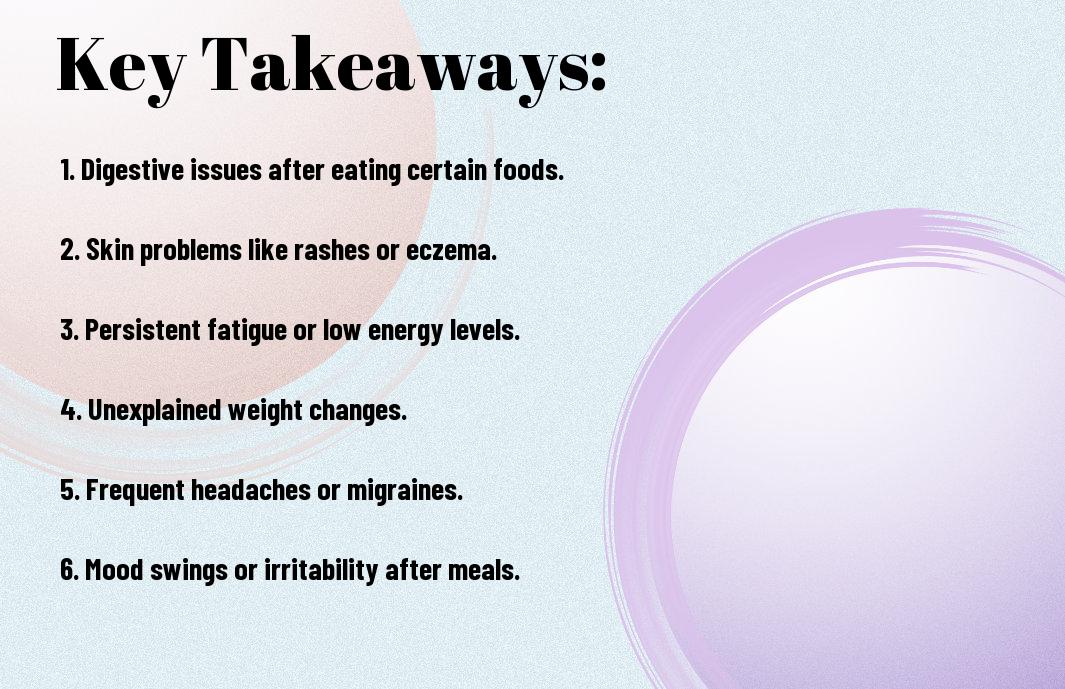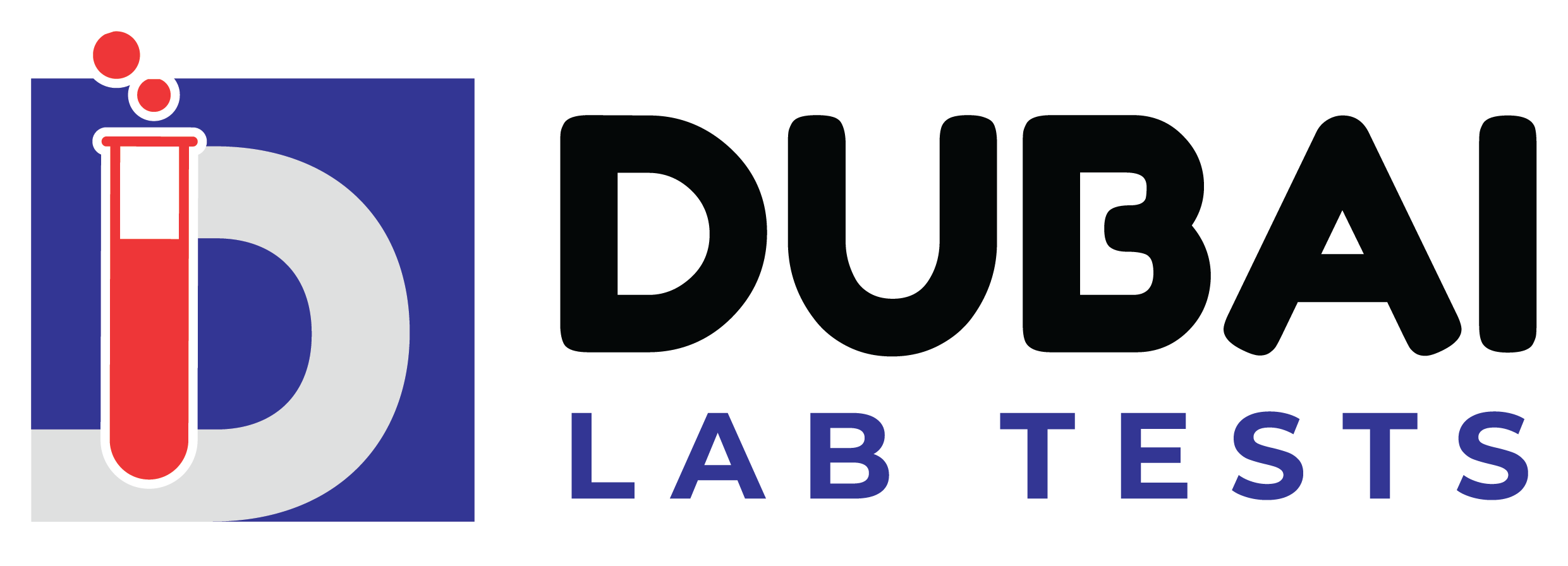Most of us have experienced bloating or fatigue after a meal, but do you know the difference between a normal reaction and a food intolerance? Recognizing the signs can be crucial for your health and well-being. In this article, we will explore the top signs that might indicate you have a food intolerance and how to address it. Stay informed and take charge of your health today.
Key Takeaways:
- Digestive Issues: Symptoms such as bloating, gas, diarrhea, or constipation after eating certain foods may indicate a food intolerance.
- Skin Problems: Skin issues like eczema, acne, or hives can be signs of a food intolerance.
- Headaches: Regular headaches or migraines after eating certain foods may point to a food intolerance.
- Chronic Fatigue: Feeling constantly tired or fatigued, especially after meals, might be related to a food intolerance.
- Joint Pain: Unexplained joint pain or inflammation could be linked to a food intolerance and should be investigated.

Common Symptoms
Digestive Issues
For those with food intolerances, digestive issues are common. Symptoms can include bloating, gas, diarrhea, and stomach pain after consuming certain foods. These symptoms occur because the body struggles to properly digest or break down certain substances in the food.
Skin Problems
Skin problems can also be a sign of a food intolerance. Common skin issues include rashes, eczema, acne, and itching. These symptoms can occur because the body is having an inflammatory response to the food allergen, leading to skin irritation.
Problems with the skin can be more than just a surface issue. They can be indicative of a deeper problem within the body, highlighting the importance of addressing food intolerances for overall health and wellness.
Energy Crashes
Energy crashes are another telltale sign of a potential food intolerance. If you find yourself feeling fatigued, sluggish, or experiencing brain fog after eating certain foods, it could be a sign that your body is having a negative reaction.
It is imperative to pay attention to these energy crashes and track which foods may be triggering them. Identifying and eliminating problem foods can lead to increased energy levels and overall improved quality of life.
Hidden Signs
Mood Swings
Hidden in our daily lives, mood swings can be a subtle indicator of a food intolerance. If you find yourself experiencing frequent changes in mood, such as feeling irritable, anxious, or even depressed without any apparent cause, it may be time to consider the possibility of a food intolerance.
Joint Pain
For those with a food intolerance, joint pain can often be a hidden sign that is overlooked. Joint pain that seems to come and go without a clear explanation may be linked to inflammation triggered by certain foods. If you notice an increase in joint pain after consuming specific foods, it’s necessary to pay attention to these patterns and consider the possibility of a food intolerance.
Joint pain associated with food intolerances is often caused by inflammation in the body. Inflammation can lead to pain and discomfort in the joints, making simple tasks difficult and affecting your overall quality of life. It’s crucial to address the root cause of joint pain and consider making changes to your diet to reduce inflammation and improve your joint health.
Unexplained Weight Gain
On the surface, unexplained weight gain may not seem directly related to food intolerances, but it can be a hidden sign that is often misunderstood. If you find yourself gaining weight inexplicably, despite maintaining a healthy diet and regular exercise routine, a food intolerance may be the culprit.
For instance, a food intolerance can lead to inflammation in the body, which can disrupt normal metabolic processes and lead to weight gain. Additionally, certain foods that you are intolerant to may cause bloating and water retention, further contributing to the number on the scale. If you suspect a food intolerance may be causing your unexplained weight gain, consider keeping a food diary and working with a healthcare provider to identify problematic foods.
Food Triggers
Gluten: The Silent Culprit
To many, gluten may seem harmless, but for some individuals, it can wreak havoc on their digestive system. Gluten is a protein found in wheat, barley, and rye, and it can trigger inflammation and digestive issues in those who are sensitive to it. Symptoms of gluten intolerance can vary widely, from bloating and gas to skin rashes and fatigue.
Lactose Intolerance: More Than Just Milk
Than just milk being the culprit, lactose intolerance is a common food intolerance that affects a large portion of the population. This condition occurs when the body lacks the enzyme lactase, which is needed to break down lactose, the sugar found in dairy products. Symptoms of lactose intolerance can include bloating, diarrhea, and stomach cramps.
For instance, many people may experience symptoms of lactose intolerance after consuming ice cream, cheese, or yogurt, in addition to milk. This can make it challenging to enjoy dairy products without experiencing discomfort.
Other Common Offenders
Milk, along with gluten and lactose, are not the only food triggers that can cause intolerance reactions. Other common offenders include certain FODMAPs (fermentable oligosaccharides, disaccharides, monosaccharides, and polyols), food additives, and histamine-rich foods.
With gluten and lactose already causing issues for many individuals, it’s important to be aware of other potential triggers that could be contributing to your food intolerance symptoms. Keeping a food diary and working with a healthcare professional can help you identify and eliminate these triggers from your diet, leading to improved digestion and overall well-being.
Elimination Diets
How to Start
With the rise in food intolerances, elimination diets have become a popular approach to identifying trigger foods that may be causing unwanted symptoms. If you suspect you have a food intolerance, starting an elimination diet can help pinpoint the culprit. The first step is to consult with a healthcare provider or a nutritionist to create a plan tailored to your individual needs and ensure you are still receiving necessary nutrients.
What to Expect
Start an elimination diet can be both empowering and challenging. Eliminating certain foods from your diet can lead to improved digestion, clearer skin, and increased energy levels if you are intolerant to those specific foods. However, it can also be difficult to navigate social situations and meal planning while avoiding trigger foods. It’s important to stay patient and committed throughout the process.
Elimination diets typically last for a few weeks to allow your body to fully eliminate any lingering effects of the trigger foods. This period may involve symptoms worsening before improving as your body adjusts to the change in diet. Keeping a food journal can help track any changes in symptoms and identify patterns as you reintroduce foods back into your diet.
Common Challenges
Expect to face some challenges while on an elimination diet. Social gatherings and dining out can become more complex as you navigate food restrictions. It can be challenging to find suitable options or to explain your dietary needs to others. Additionally, cravings for the eliminated foods may arise, testing your willpower. It’s necessary to stay focused on your health goals and remind yourself of the potential benefits of identifying and eliminating trigger foods.
Common challenges during an elimination diet include food boredom and the potential risk of nutrient deficiencies if not carefully planned. It’s crucial to seek guidance from a healthcare provider or a nutritionist to ensure you are maintaining a balanced diet and meeting your nutritional needs during this period.

Testing and Diagnosis
Despite Food intolerance being a common issue, diagnosing it can be challenging. There are several methods that healthcare professionals may use to determine if you have a food intolerance.
Blood Tests
One way to test for food intolerances is through blood tests. These tests can measure your immune system’s response to specific foods by detecting the presence of antibodies. However, it’s important to note that blood tests are not always 100% accurate and may not identify all food intolerances.
Elimination Diet Results
Tests revealed a high intolerance to certain food groups, you may be advised to undergo an elimination diet. This involves removing suspected trigger foods from your diet for a period of time and then slowly reintroducing them to determine which ones are causing the symptoms.
For instance, if you suspect you have a dairy intolerance, you may eliminate all dairy products from your diet for a few weeks. You would then gradually reintroduce dairy one at a time and monitor your body’s reactions. This process can help identify specific food triggers that may be causing your symptoms.
Consulting a Healthcare Professional
Diagnosis by a healthcare professional is important for accurately identifying and managing food intolerances. They can help you navigate the testing process, interpret results, and provide guidance on making necessary dietary changes.
With proper diagnosis and guidance, you can effectively manage your food intolerances and improve your overall health and well-being.
Managing Food Intolerances
Now let’s discuss some strategies for managing food intolerances. Making dietary changes is often the first step in addressing food intolerances.
Dietary Changes
To manage food intolerances, it is vital to identify and eliminate trigger foods from your diet. Keeping a food diary can help you track your symptoms and pinpoint which foods may be causing issues. Once you have identified problematic foods, it is crucial to avoid them to prevent symptoms from recurring.
Supplement Options
To support your body while managing food intolerances, consider incorporating supplements into your daily routine. Probiotics can help promote gut health and reduce inflammation, while digestive enzymes can aid in the breakdown of food particles that may be causing issues. Consult with a healthcare provider or nutritionist to determine which supplements may be beneficial for you.
Supplements should not be used as a replacement for a healthy diet, but rather as a supportive measure in managing food intolerances.
Lifestyle Adjustments
Managing food intolerances may also require lifestyle adjustments to support your overall well-being. Stress management techniques such as yoga, meditation, or deep breathing exercises can help reduce inflammation and improve digestion. Getting an adequate amount of sleep and maintaining a regular exercise routine can also support your body in managing food intolerances.
By incorporating these lifestyle adjustments into your daily routine, you can help alleviate symptoms associated with food intolerances and improve your overall quality of life.
Conclusion
Conclusively, recognizing the signs of a potential food intolerance is crucial for maintaining optimal health and well-being. From digestive issues to skin problems, the body often provides subtle clues that something might not be agreeing with it. By paying attention to these signs and seeking medical advice if needed, individuals can take proactive steps towards identifying and managing their food intolerances.
Do not forget, each person is unique, and what works for one may not work for another. It’s necessary to listen to your body, keep a food diary, and consult with a healthcare professional to determine the best course of action for managing any potential food intolerances. By staying informed and proactive, you can take control of your health and make informed decisions about your diet and overall well-being.
FAQ
Q: What is a food intolerance?
A: A food intolerance is difficulty digesting certain foods, which can lead to various symptoms such as bloating, gas, and stomach cramps.
Q: What are the top signs of a food intolerance?
A: The top signs of a food intolerance include bloating, gas, diarrhea, stomach cramps, and nausea after consuming certain foods.
Q: How is a food intolerance different from a food allergy?
A: A food intolerance is a digestive issue that does not involve the immune system, whereas a food allergy is an immune system response that can be life-threatening.
Q: How can I determine if I have a food intolerance?
A: Keeping a food diary and noting symptoms after eating certain foods can help identify patterns and potential food intolerances. Consulting a healthcare provider for testing is also recommended.
Q: What are some common foods that people are intolerant to?
A: Common foods that people are intolerant to include dairy, gluten, eggs, and certain FODMAPs (fermentable oligosaccharides, disaccharides, monosaccharides, and polyols).



